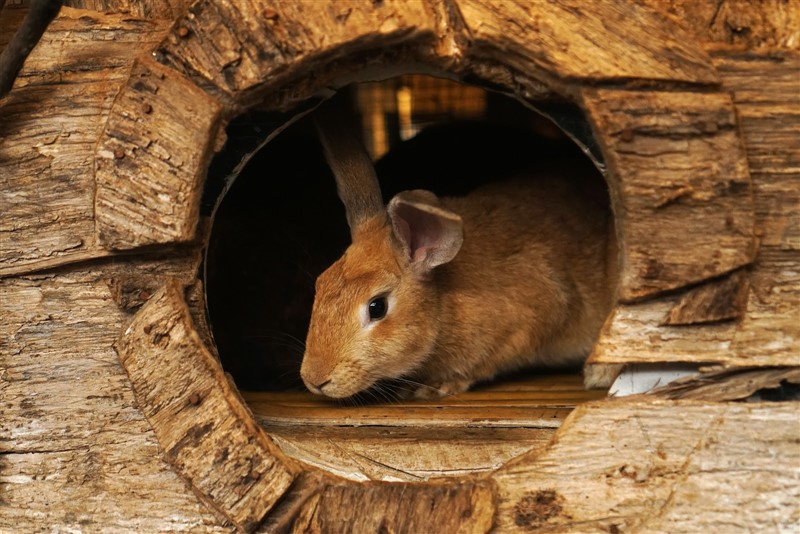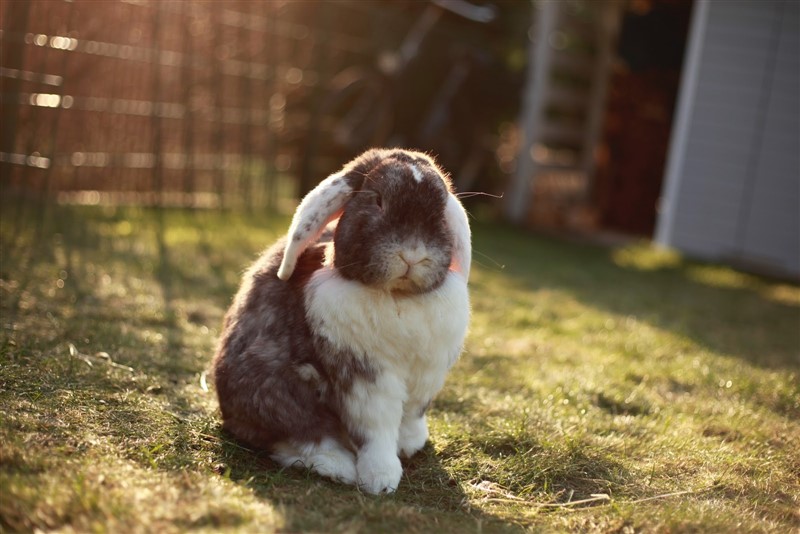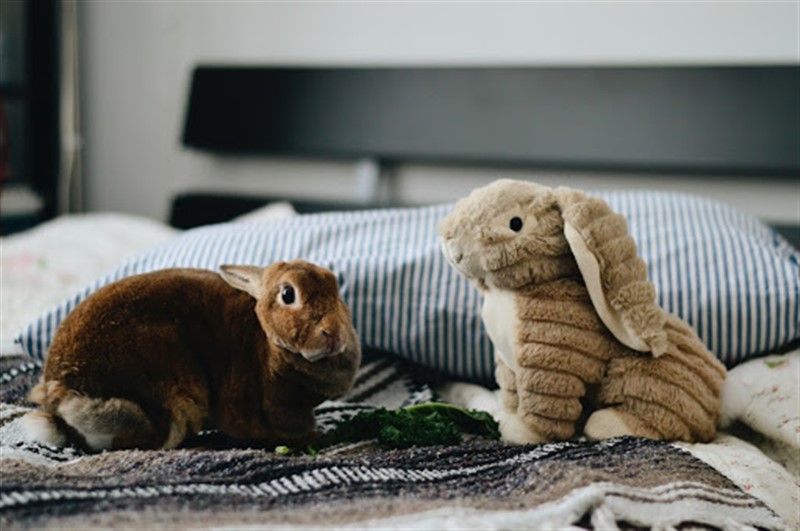A rabbit is any small mammal of the order Leporidae that does not descend from the genus Lepus (aka hares). A bunny is simply a baby rabbit.
-
 Alanna Madden
Alanna Madden
-
 January 13, 2021
January 13, 2021
-
 Grammar Tips
Grammar Tips
 January 13, 2021
January 13, 2021
 Grammar Tips
Grammar Tips
A rabbit is any small mammal of the order Leporidae that does not descend from the genus Lepus (aka hares). A bunny is simply a baby rabbit.
Many English speakers grow-up with an awareness of the Easter bunny or the cartoon character Bugs Bunny, but did you know neither character is a “bunny” at all? That’s right— these beloved characters are actually more like rabbits and hares, which are two animals people also confuse.
The noun rabbit is also another term for “hare,” although hares are entirely different animal species than a rabbit (don’t worry, we will divulge all the details later on).

The word bunny (plural “bunnies”) is an informal noun that we use to mean ‘young rabbit,’ ‘a young girl,’ ‘an attractive female,’ or ‘an easy basketball shot’ located near the hoop. When paired with an adjective, the noun bunny also describes a person “of a specific type,” such as “snow bunny” or “Easter bunny.”
Example sentences:
The word rabbit is a noun or verb that references any small animal of the family Leporidae, especially the European or cottontail rabbits of the Americas. As a noun, English speakers typically use the word “rabbit” to mean ‘a wild or domesticated rabbit animal,’ the ‘rabbit fur,’ or the ‘meat of rabbit’ (kept as food).
Example sentences:
Outside of the term’s literal meaning, we can also use the noun “rabbit” to describe a runner who acts as a pacesetter in the first laps of a track event or an artificial, mechanical decoy sped along the side of a dog tack for pursuit.
Example sentences:
As for the verb meaning, “to rabbit” means ‘to hunt rabbits’ or ‘to quickly run away.’ However, English speakers (especially British English) also use “rabbit” as an informal noun or verb to mean ‘conversation’ or ‘to talk at length about trivial matters.’
Sentence examples:
When using “rabbit” as a verb, be sure to use “rabbit” or “rabbits” for the present tense, “rabbiting” for the present participle, and “rabbeted” for the past participle.

The word rabbit appears in several English phrases, making bunny vs. rabbit more difficult for non-native speakers to understand. The three most common phrases of “rabbit” include:
If you didn’t already know, rabbits are known for short gestation periods, meaning they become pregnant quickly, have shorter pregnancies, and give birth to many children at once. Thus, English speakers use the phrase “breed like rabbits” to describe someone or something that produces many children in a short period of time.
Sentence examples:
Have you ever watched a magic show? If so, you’ve likely witnessed a magician pull a white rabbit from the bottom of their tophat. At one time, this old-fashioned magic trick was so popular that people began using the phrase “pull a rabbit out of a hat” to describe something as ‘unexpected and ingeniously effective.’ In other words, people use the phrase to mean ‘making the impossible possible.’
Sentence examples:
The next saying is much easier to learn if you’ve read Lewis Carrol’s book, Alice in Wonderland. “Down the rabbit hole” is a phrase that metaphorically uses “rabbit hole” to describe a complex and bizarre circumstance that one ‘falls into’ like a hole in the ground. Alternatively, we might use the phrase to describe when the pursuit of answers produces several more questions and further research.
Sentence examples:
Historically speaking, people have used the word rabbit far longer than bunny. According to the New Oxford American Dictionary, the Middle English spelling of “rabbet” stems back to Old French “rabbotte” for ‘young rabbit’ or ‘the young of the species’ (“Rabbit” 1437).
As for adult rabbits, 14th-century speakers used the term “coney” instead, which originated with plural Ango-Norman conis from Latin conicula. In fact, all domestic rabbits originate from the “Old World” or European rabbit (Oryctolagus cuniculus), whose genus name derives from Greek orukter (‘digging tool’) and lagos (‘hare’). The species name “cuniculus” is Latin for ‘rabbit’ and ‘underground passage.’
The word “bunny” didn’t enter the English language until the 17th century, where it was a term of endearment. While linguists don’t understand why “bunny” became a popular term for loved ones, they know the connection between “bunny” and “baby rabbits” stems from dialectical bun for ‘squirrel’ or ‘rabbit’ (“Bunny” 232).

As we now know, a “bunny” is a baby rabbit that matures into an adult “rabbit.” To remember the difference between these terms, associate the letter b of “bunny” with “baby.” For example,
Bunny = B = Baby rabbit
Rabbits and hares are different species of animals that come from the order of mammals called Lagomorpha— just like humans, gorillas, and lemurs all come from the order Primates. Under the order Lagomorpha, there are two extant animal families: the Ochontonide and the Leporidae.
Pikas come from the Ochontonide animal family, while rabbits and hares come from the family Leporidae. But within every animal family is one or several different genera, with each genus containing individual species. All hares derive from the genus Lepus, while the remaining ten genres of the Leporidae consist entirely of rabbits.
Since rabbits and hares are closely related, they share several physical traits, such as long ears, powerful hind legs, and a divided upper lip. But when it comes to behavioral traits, the two animal types are easier to differentiate:
As of 2020, there are roughly 32 species of hare and 29 species of rabbit, but many species are misidentified or given incorrect names. For instance, all four Red Rock Hare species were mislabeled under the genus Lepus until biologists realized they were actually rabbits.
Additionally, all six “jackrabbit” species are hares, which makes learning the difference between hares and rabbits more confusing. Other species with incorrect “rabbit” or “hare” names include:
The last note for hares vs. rabbits is that wild rabbits are not the same animal as domesticated rabbits. There are over 100 different breeds of domestic rabbits derived from the European rabbit, which is only found in the wild outside of North America. All other hare and rabbit species are considered to be “wild.”
Test how well you understand the difference between bunny vs. rabbit with the following multiple-choice questions.
Answers